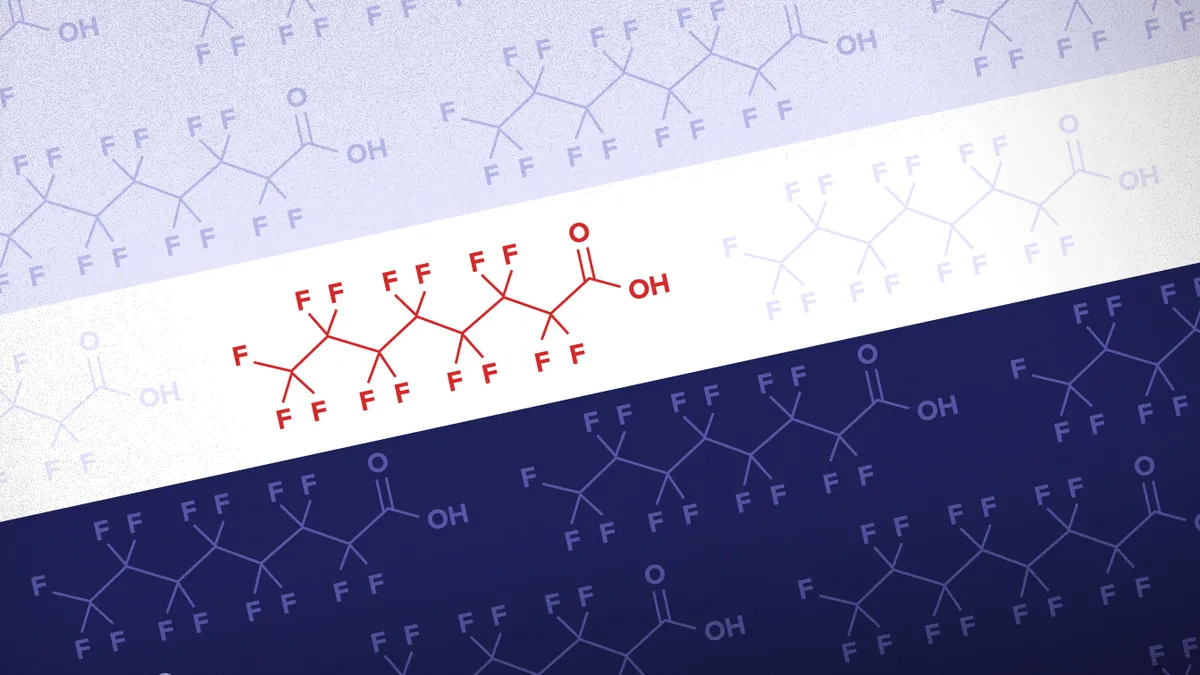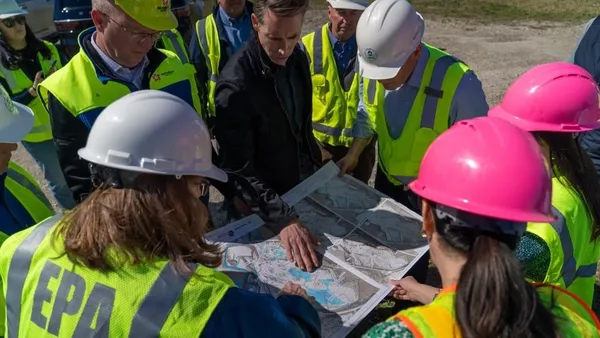Dive Brief:
- Recent interim guidance from the U.S. EPA provides details for disposing of or destroying certain per- and polyfluoroalkyl (PFAS) substances and materials containing them, but the agency and industry analysts say there are lingering questions to answer before moving forward with any possible regulations.
- The document, the first such federal guidance on the destruction or disposal of PFAS or PFAS-containing materials, describes the available science used in three major techniques: deep well injection, landfilling and thermal treatment. Acknowledging uncertainty about potential environmental effects, the EPA proposed the interim storage of PFAS-containing waste until further research can “reduce the uncertainties associated with other options.”
- Industry groups such as the National Waste & Recycling Association (NWRA) and the Solid Waste Association of North America (SWANA) said they are still analyzing the document and discussing with their members what the interim guidance may mean for daily operations. The trade groups will likely submit comments on the document by the Feb. 22 deadline.
Dive Insight:
The EPA guidance comes as landfills and incinerators continue to grapple with looming legal and financial concerns over how they may be required to handle PFAS at their facilities in the future. Landfills and incinerators do not generate PFAS on their own, but operators still must manage the chemicals because they appear in materials entering the waste stream such as food packaging, outdoor clothing and cosmetics, NWRA said.
The waste industry is searching for clarity and solutions on how to handle PFAS, with multiple companies seeing an opportunity to treat or dispose of material containing these chemicals depending on how regulations evolve. The guidance document is the first time the EPA has previewed possible solutions companies could implement, and ranks them in order of perceived safety and viability, but it stops short of offering concrete regulations or standards.
Anne Germain, NWRA’s chief operating officer and senior vice president of technical and regulatory affairs, said many of the agency's recommendations seem in line with techniques most landfills already use. Many modern MSW landfills are already designed to eliminate discharge and reduce leachate generation using technologies mentioned in the new guidance, such as double liner systems with leachate collection and leak detection, Germain said.
The document describes the science behind each commercially available method based on recently available research, but it stresses each of the three technologies still involve unknowns.
The EPA lists the methods in order of “lower uncertainty to higher uncertainty,” starting with injecting liquid PFAS into deep wells, then storing PFAS in hazardous waste landfills and solid waste landfills. It mentions thermal treatments, such as commercial incinerators and hazardous waste combustors, as the last recommendation.
The agency acknowledges it’s unclear whether the chemicals might escape from landfills into the atmosphere or react with landfill liners. Regulators are also not clear on what gets emitted into the air when facilities burn PFAS and what risks are involved in transporting PFAS to injection sites, according to the document. “Ongoing research is being conducted to address the gaps in the current state of knowledge about PFAS destruction and disposal technologies and PFAS monitoring methods,” it states.
Germain said the waste industry doesn’t consider the guidance “the be-all, end-all document on PFAS destruction and disposal” because much more research needs to be done before the EPA can write specific regulations. “We are lacking the information to make informed decisions” for regulations, she said. “We still don’t know all the things that contain PFAS, or even how much is getting into landfills.”
The interim guidance consolidates existing research on these methods into a single document, which may help landfill and incinerator operators do their due diligence in managing these chemicals in the absence of federal regulations, said Gomathy Radhakrishna Iyer, a landfill leachate and design expert for SCS Engineers.
While the document doesn’t hold any regulatory authority, Radhakrishna Iyer said the guidance can still help landfill operators prepare for regulations they anticipate the EPA may release in the future. Although there are various laws and regulations related to PFAS in the environment, there currently are no federal laws related to PFAS destruction or disposal.
“If regulations come into play, this helps them see if the existing pretreatment they have is enough, or if they may have to upgrade. If they have to think about an upgrade, it gives them guidance on what they should be looking for,” she said.
The EPA was required to prepare the document as part of the fiscal 2020 military spending law, which also asked the U.S. Department of Defense to stop using fluorinated firefighting foams, a source of PFAS.
The nonprofit Environmental Working Group criticized the interim guidance, saying in a statement the current methods used for managing PFAS are not effective. It urged the EPA to focus on “ending non-essential uses and PFAS discharges into the environment outright." The group further pressed for investment in alternative measures such as better monitoring of PFAS contamination near disposal sites and more research into PFAS incineration, as well as capturing liquid waste at landfills and keeping it onsite. It also called for an end to “the environmental injustice of PFAS contamination in communities near the disposal sites.”
The incoming Biden administration plans to tackle PFAS by designating it as a hazardous substance and directing resources to further PFAS research. It also aims to set enforceable limits for it in the Safe Drinking Water Act. There are currently no maximum contaminant levels established for PFAS chemicals, according to the EPA.















